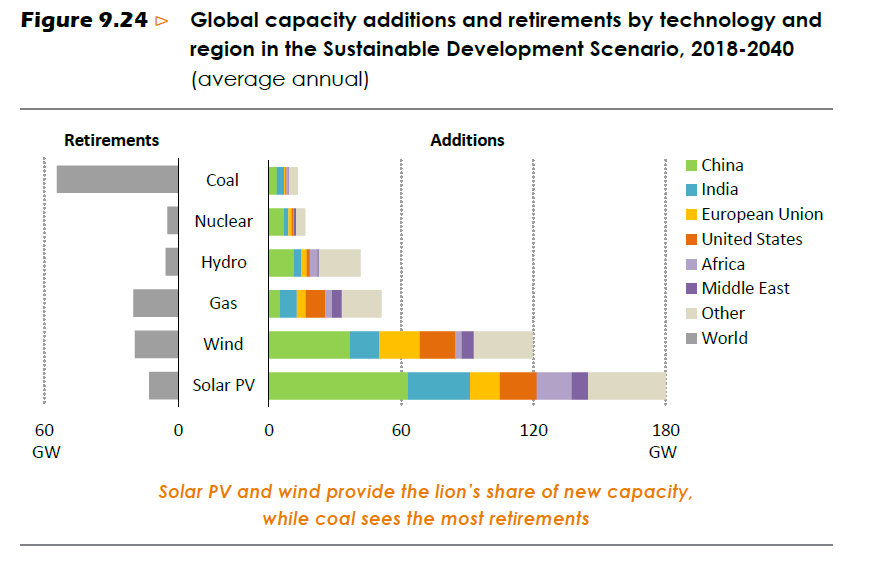Nuclear Power provides the performance we need
We often speak about the incredible energy density of
nuclear fuel; a pellet the size of the end of your finger can deliver as much
energy as a ton of coal. In addition to
producing a large amount of energy from a very small amount of resource, the
plants themselves offer another important benefit, their exemplary operating performance. They operate at very high capacity factors
(the amount of energy produced / the total energy that would be produced if the
unit ran nonstop) meaning they provide us with a reliable 24/7 energy source to
support our energy hungry economies.
In fact, even as the global fleet ages, it just keeps on
getting better. In 2018, the US fleet
produced the most energy ever, exceeding the previous peak from 2010 even
though 7 units have been retired and only two new ones have come on
stream. The annual capacity factor in
the US for 2018 was 92.3%. This should
come as no surprise since the US fleet has operated around 90% CF for the past
20 years. This is a testament to the
technology and its robustness. Not only
does nuclear operate extremely well, it does so at all times during its very
long life. It has no early life breaking
in period and no end of life deterioration in its performance. It just continues to provide the energy we
need day after day, year after year.
Let’s contrast this with the world’s most talked about generation
sources, wind and solar. Not only are
they intermittent, because the wind doesn’t always blow and the sun doesn’t
always shine, but on average they produce relatively small amounts of energy
from a given plant, i.e. a low capacity factor. Wind farms usually operate about 35% of the
time and solar only about 15% of the time.
Not only does each generator produce a relatively small amount of
energy, it can’t be called upon to produce it when it is needed.
This is why it is frustrating and frankly, deceptive, when supporters tout how much capacity of new renewables is being added to the grid, without mentioning the inconvenient truth of how little energy they are really contributing. The following figure shows how much capacity is expected to be added to the global grid in the World Energy Outlook (WEO) 2018 Sustainable Development Scenario.

At first look, it seems like wind and solar are leading the
charge to decarbonize the world energy system – 180 GW of new solar, 120 GW of
new wind and only 17 GW of new nuclear.
But now let’s transform these capacities into energy. The WEO assumes that nuclear runs about 80%
of the time, wind 30% and solar 15%. So,
what does this mean? Building 10 times
the amount of solar and about 7 times the amount of wind as nuclear results in
only about TWICE as much energy being produced from these sources as from new
nuclear. Yes, you heard that right. Building 180 GW of solar running 15% of the
time produces only about double the energy in a year as building 17 GW of
nuclear plant that runs 80% of the time.
And to top it off, the nuclear energy is also reliable and predictable. Of more importance, it also means that there
is a need for much more land to place all these wind and solar plants, a huge
increase in the materials mined to manufacture them, a much larger and more
complex transmission system, and a storage system that is not yet
technologically feasible to accommodate their intermittency ( or more likely
gas generation to back them up); all leading to higher costs of energy, less system
reliability and more carbon emissions.
A successful narrative has been created that renewables are
a good way to meet all our energy needs, but it is based on how they make us
feel, not on science. Who doesn’t like the
sound of harnessing nature and getting our energy from the wind and the sun? In reality, we simply cannot make the wind
blow or the sun shine. We cannot imagine
our way to a clean energy future with solutions that sound good but are
incapable of giving us the result we so desperately need. In fact, the WEO bases its low carbon
scenario on implementing large efficiency gains to reduce demand as a massive
renewables new build program alone cannot meet the carbon reduction targets.
Looking at these numbers, should we be investing in these enormous
quantities of renewables (and the back up / storage needed to accommodate their
intermittency) or is there a better path to a lower cost decarbonized energy
system. Nuclear power delivers what we
need when we need it – large quantities of economic, reliable and low emission
energy.